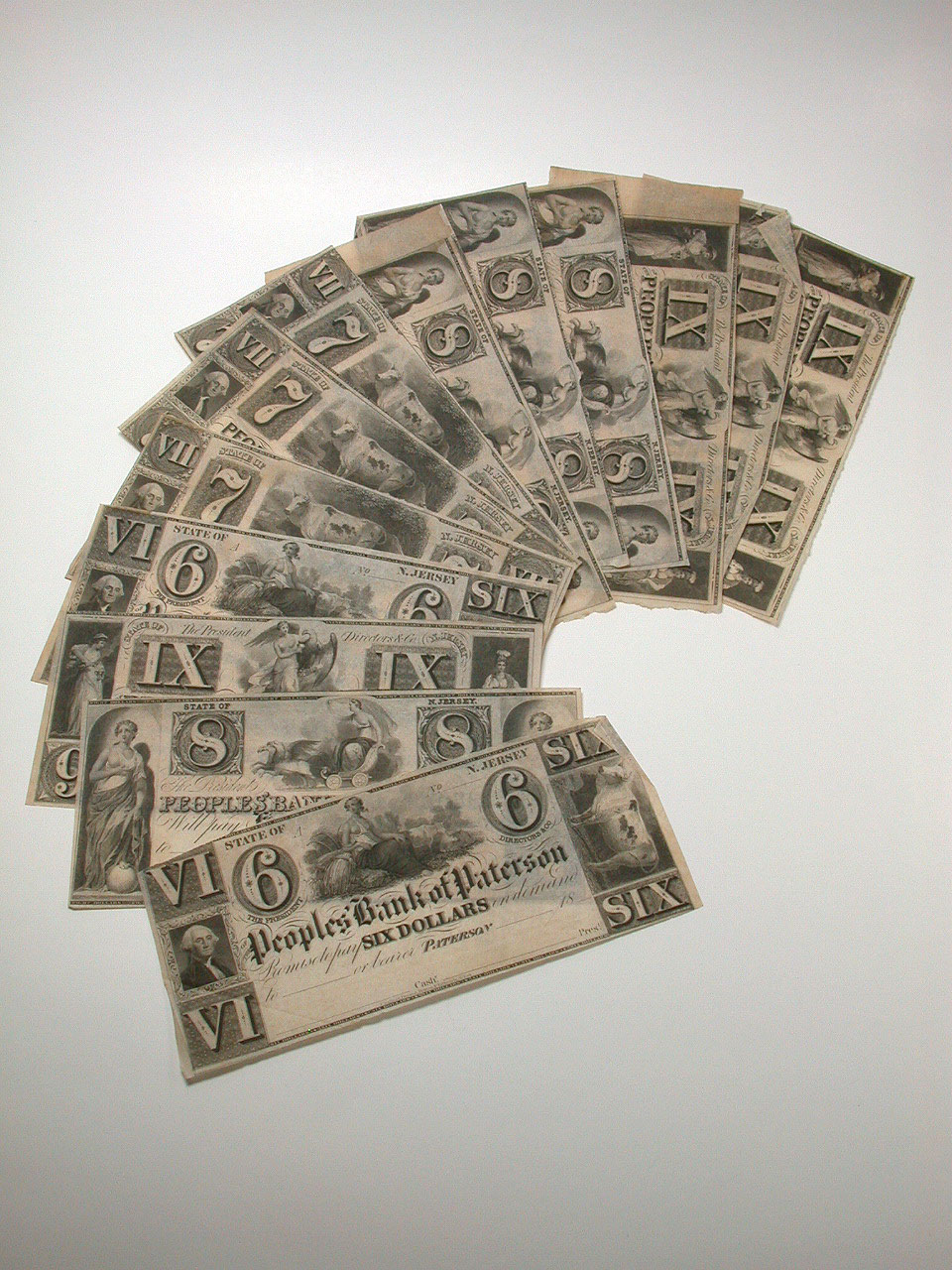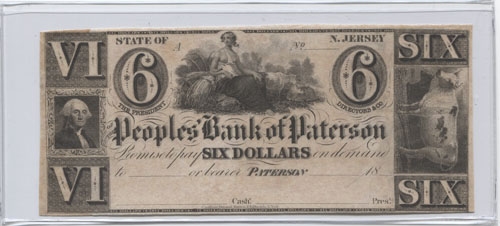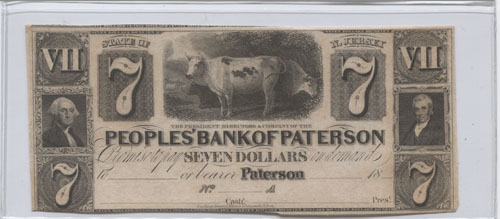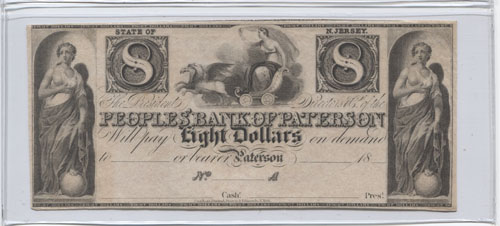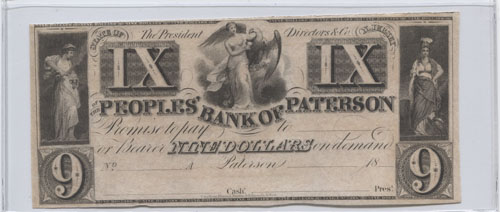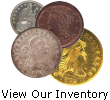A collage of some of our past coin show badges. Yes, these are actual photos on real show badges.

The following was posted by Marne, our coin photographer.
As Northeast's coin photographer I receive many compliments and questions on our coin images and imaging techniques. I appreciate every comment, and try to answer questions as well as I can so that you too can image your coins as best as possible! While I cannot walk everyone through every step, I have written some basic explanations, directions, and tips. For more in-depth instruction I suggest you find online tutorials or subscribe to Adobe Creative Cloud. If you prefer to read a real book, I recommend "The Digital Photography Book" by Scott Kelby to really learn best how to use the functions on your digital camera. He also has books on Photoshop use.
The camera:
Needed is high quality digital camera with a macro setting. Digital cameras, even simple ones, are very high quality these days. I use a Nikon digital camera that has a macro setting on it. Most good quality "point and shoot" digital cameras can take decent macro photos without the added lens that a very high end DSLR camera has. If you already have a DSLR camera such as a Nikon D3000 or Canon EOS Rebel and think you will really put a lot of time into photographing coins, then it would be worth investing in a macro lens. I currently use a manual macro setting with the standard lens on my point and shoot camera. You should ideally mount the camera on a tripod or tabletop imaging station when using macro to create sharper, crisp images.
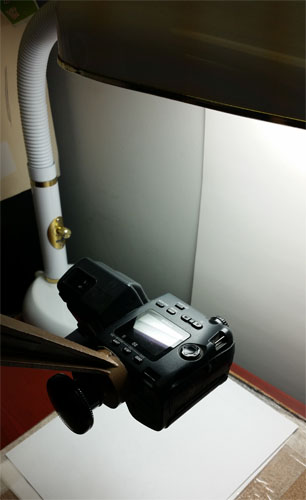
The lighting:
I do not recommend you use the flash on your camera. The lighting is harsh and creates shadows. There are small photography lights readily available on the market. I use a daylight lamp, not meant specifically for photography, to cast plenty of light down on the imaging surface. I also cover or turn off other lights near my work area. You can use a single lamp that covers a good amount of surface if it is bright enough for individual coins and use multiple lights if you have larger items or several coins grouped together. I use multiple lights when imaging a whole coin slab or boxed set. You want your item well lit, and any shadows eliminated. I recommend manually setting the white balance on your camera while photographing a white or grey background under the lighting you will use.
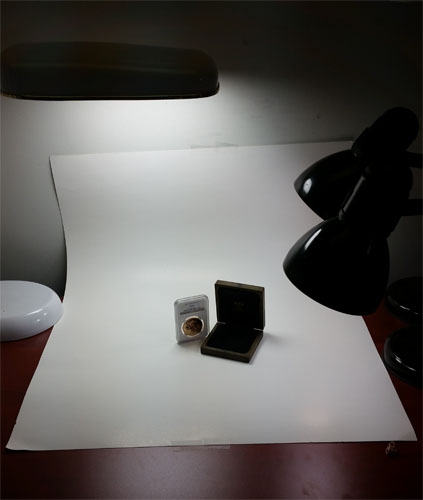
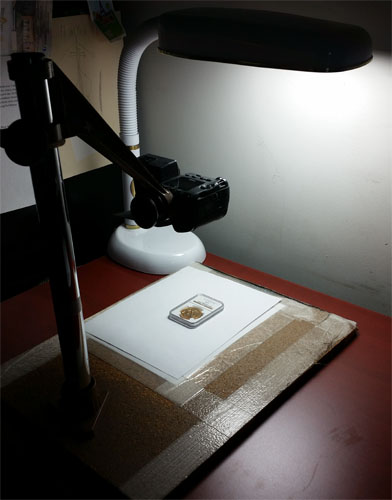
Editing:
An important step that a lot of people skip (or think is cheating but isn't), is the use of image editing software. Just like in the days of film photography when a lot of finishing was done in the dark room with developing techniques, you should use photo editing software to “develop” your digital photography. So much light is put on the coins to get all the detail in the image that it can wash out the coin in the photo and make it look lighter or more flat looking than it does in hand. I use photo editing software to lighten or increase shadow, and help bring out the luster in the coins. I try to make them look on screen as close as possible to how they look in hand. I crop the coin images to remove the distracting background and have actions programmed into my Photoshop editing software to resize them and add our company copyright to ready them for our website.
If you don't have Photoshop software, you can subscribe online to many types of free software or even on Adobe’s site for actual Photoshop software for around $10 a month. There are tutorials to describe how to accomplish some of the functions I have described, and highly I recommend them I do.

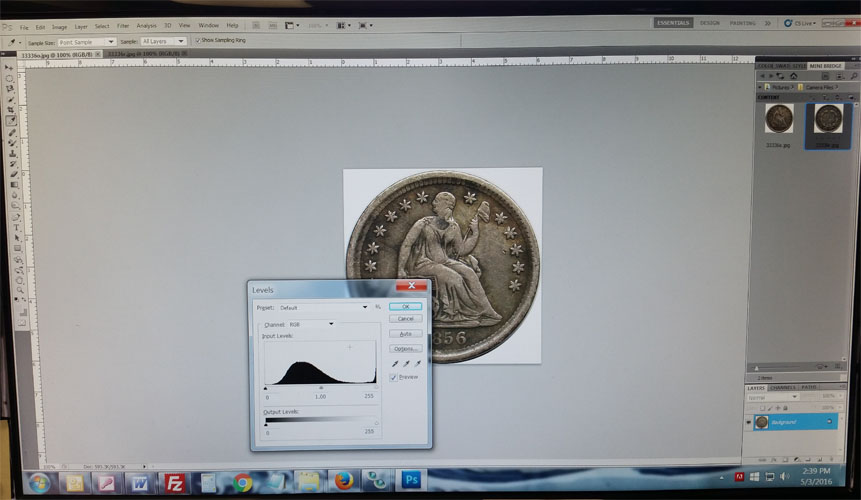
Some tips on photographing specific types of coins:
I have used two lights at different angles to bring out the cartwheel effect on brilliant coins, such as Morgan Dollars. If a coin is very frosty looking, you can use cooler florescent lamps to avoid adding too much warm color to the coin.
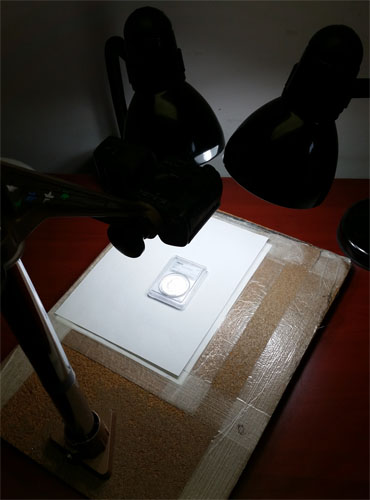
Copper coins look very nice if you can increase the brightness, while deepening the shadows just a small amount. For coins that are very dark, I recommend that you lower your exposure using the -/+ on your camera to ensure you do not wash out the color too much. For rainbow toned coins, I usually image them at an angle, since tilting them in the light is what really brings out the color. Diffuse the light with a light diffusing cover or even thin paper to eliminate the glare. I then adjust the levels in Photoshop until the coin looks as it does in hand. Some practice is required for this technique.
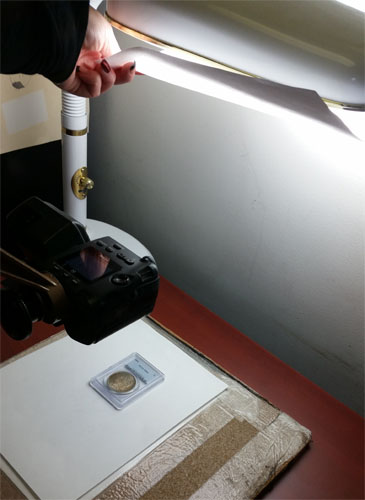
Many of you have probably noticed that sometimes we show two different images of the same coin. For coins that look significantly different when viewed at different angles, I will often provide two sets of images for that coin. One set using the angled/diffused method I just mentioned and one set using the typical straight down shot without diffusing the light.
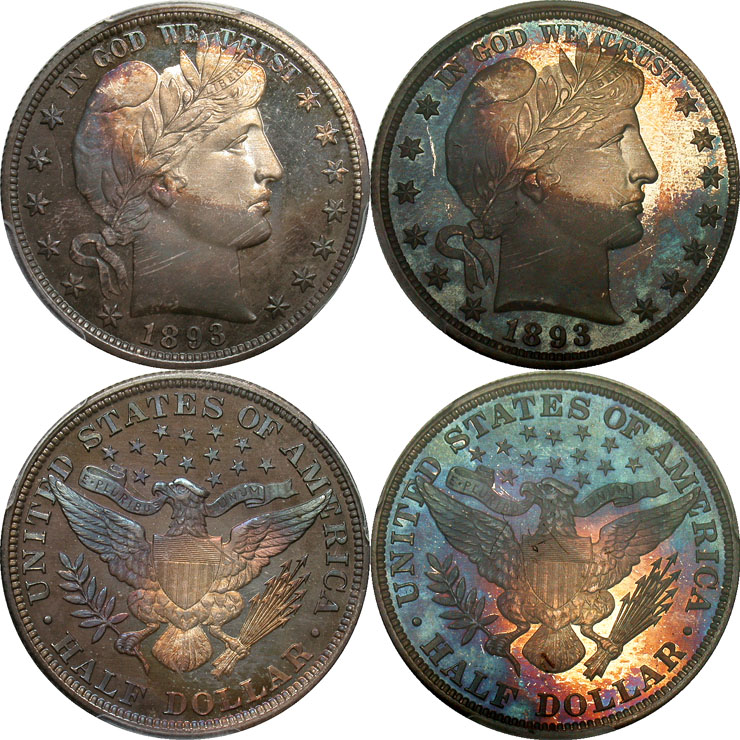
To photograph the entire coin and grading slab I stand the slab on the background I'm using and shine as much light on and around it without causing glare on the plastic. I also frequently use a flatbed scanner. Scanned coins look very flat and dark, so this is best for modern coins or when you need to see the slab more clearly than the actual coin.
Currency is best imaged with a flatbed scanner, but be warned that modern currency is detected by Photoshop and violates laws about duplication so this option is usually only available for older currency.
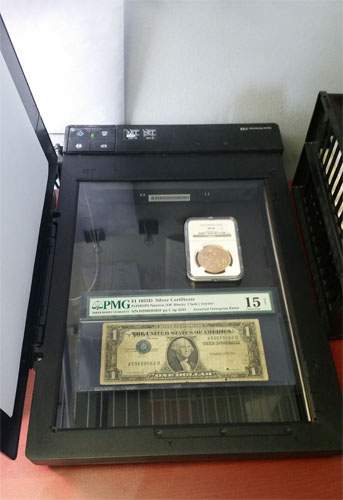
I wish you all the best on your coin imaging quest!
~Marne
thank you very much for your info--i use a nikon coolpix L610--
You're welcome!
We added seven double row boxes of new purchases in the last 24 hours. Here's Brian's reaction to all the newps.
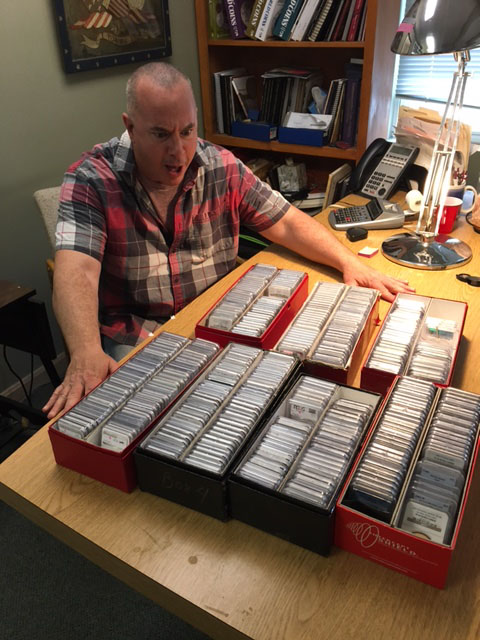
Anyone remember these?
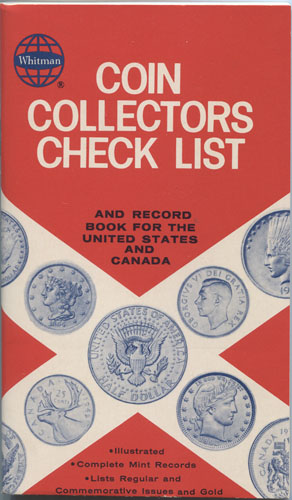

One of these made their way into our office the other day via a collector. Before the internet and smart phones, this would actually be a very useful tool for managing your collection while at a coin show. Notice also that this was obviously before the Sheldon Scale became the standard for coin grading.
We’re all familiar with the currency we use today which are the $1, $2, $5, $10, $20, $50, and $100 bills. The United States in the past has also printed $500, $1,000, $5,000, $10,000 and even $100,000 notes (the latter were used only for transactions between Federal Reserve banks and did not circulate).
However, these weren’t the only denominations to exchange hands in the United States. For example, along with other denominations, the People’s Bank of Paterson in New Jersey distributed $6, $7, $8, and $9 notes.
The images below are of remainder notes, which are leftover notes that go unused by a bank.
